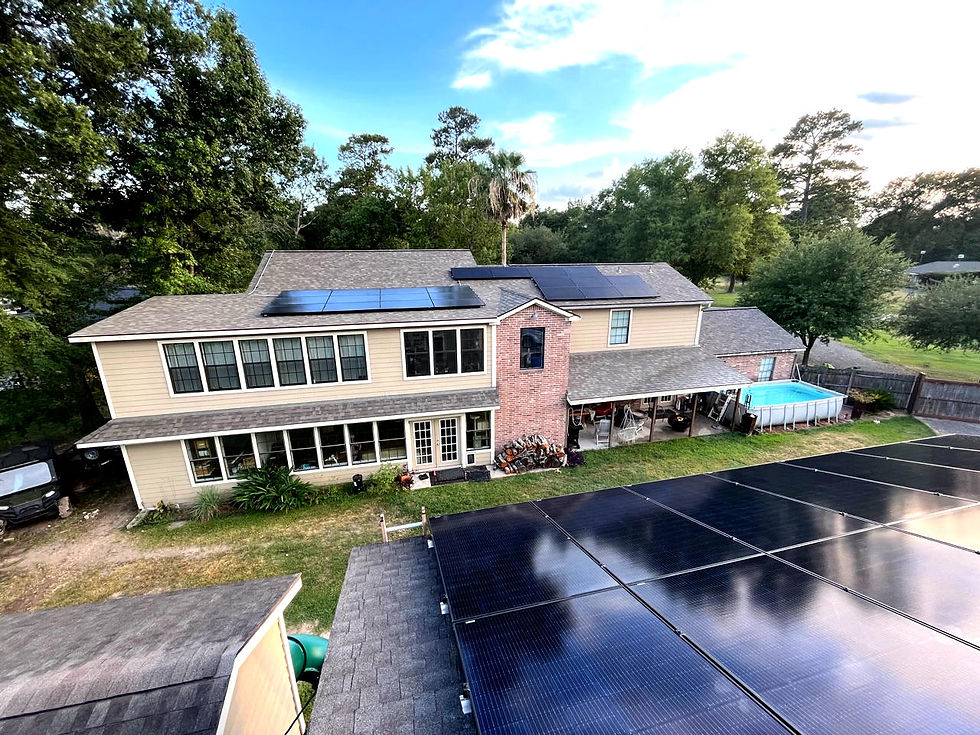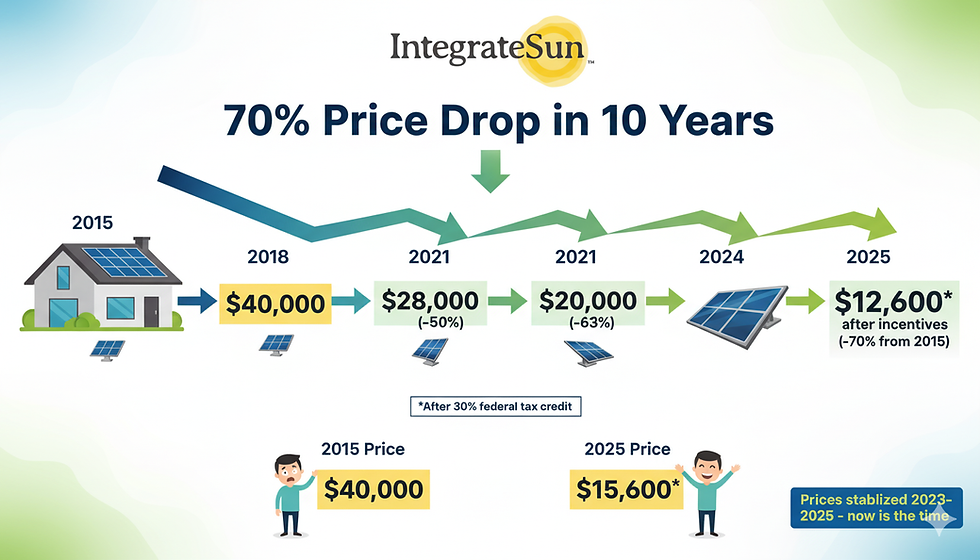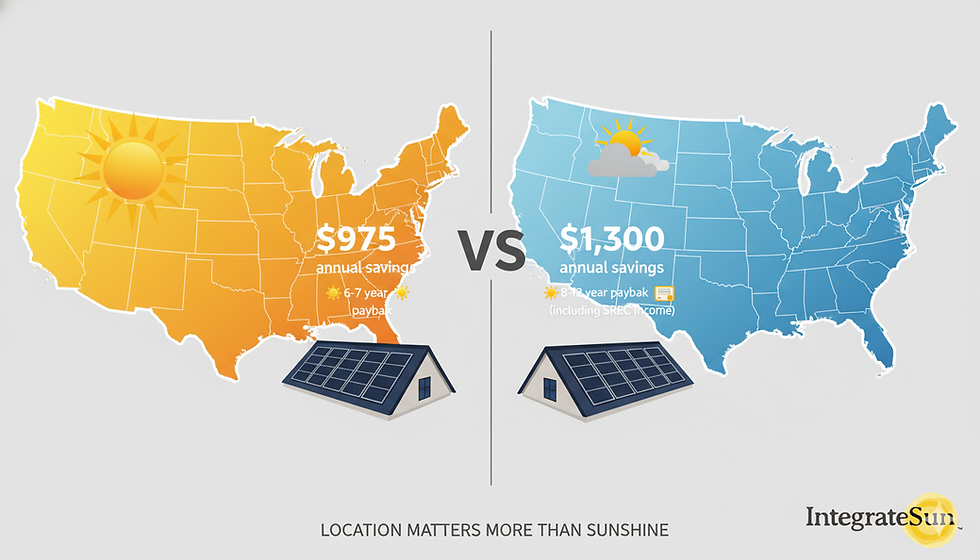Micro Inverter vs String Inverter: Your Guide to Smart Choices as Homeowners
- ifeoluwa Daniel
- Apr 15, 2023
- 5 min read
Updated: Feb 5, 2024

In This Article:
If you're considering going solar, one crucial decision you'll need to make is choosing the right inverter for your system. You might be wondering, "What's the big deal about inverters?" Well, inverters are the unsung heroes of solar systems, converting the sun's energy into usable electricity for your home.
Now, when it comes to inverters, there's a bit of a debate between microinverters and string inverters. Which one's better? Which one's right for you? No worries! We've got your back. In this handy guide, we'll dive deep into the world of microinverters and string inverters, exploring their pros and cons to help you make a smart choice as a homeowner.
First, Let’s about Microinverters

First things first, let's figure out how it works. Microinverters transform the direct current (DC) produced by each solar panel into alternating current (AC) right where the power is generated. Every microinverter operates separately, which means that in case one panel's output is obstructed by shading, it will not impact the performance of other panels.
So, what's the deal with microinverters, and why are they getting so much attention? Let's take a peek at their pros.
Pros
Individual panel optimization: With microinverters, each solar panel operates independently. So, if one panel is underperforming (maybe it's a bit shaded or dirty), the others won't be affected. Pretty cool, right?
Greater efficiency in shaded conditions: Because each panel works independently, microinverters can squeeze out more energy from your solar array, even when some panels are shaded. It's like having a superhero on your roof!
Enhanced monitoring capabilities: Want to keep an eye on your solar system's performance? Microinverters offer detailed, panel-level monitoring. Talk about keeping tabs on your energy production!
Scalability and easier expansion: Want to expand your solar system down the line? No problem! With microinverters, you can easily add more panels without breaking a sweat.
Now, it's not all sunshine and rainbows. There are some cons to consider with microinverters:
Cons
Higher upfront cost: Yup, microinverters can be a bit pricier than their string inverter counterparts. But hey, sometimes you've got to spend a little to get those extra perks, right?
More components, potentially more points of failure: With a microinverter for each panel, there are more components that could potentially fail. However, most microinverters come with solid warranties, so that's a bit of a silver lining!
How about String Inverters

Now that we've chatted about microinverters, let's dive into the world of string inverters! How do they work, and what makes them different from their microinverter counterparts? Well, string inverters link all your solar panels together in a series, sort of like a string of holiday lights. The combined DC power from the panels is then converted into AC power by a single, centralized inverter.
When using string inverters, the production of the entire system is dependent on the performance of the least productive panel. This implies that if a panel is partially obstructed by a branch and its output is reduced by 20%, the overall system will only generate 80% of its total potential output. Nevertheless, the issue can be resolved by utilizing optimizers.
Pros:
Lower initial cost: If you're watching your budget, string inverters can be a more wallet-friendly option compared to microinverters. It's like getting more bang for your buck!
Simpler installation: With just one inverter for your entire solar array, installation can be a breeze. Fewer components mean less fuss, right?
Proven technology with a longer track record: String inverters have been around the block and have a longer history in the solar industry. Sometimes, it's good to go with the tried and true!
But hold your horses! String inverters have their fair share of cons, too
Cons:
Reduced performance in shaded conditions: Unlike microinverters, if one panel underperforms due to shading, the whole string's performance can take a hit. It's like one weak link affecting the entire chain.
Limited monitoring at the panel level: With string inverters, you won't get that fancy, detailed monitoring for each panel like you would with microinverters. Bummer, right?
Potential challenges with future expansion: Adding more panels to your solar system might not be as simple with string inverters, especially if you're trying to mix and match different panel types or sizes.
Cost and Return on Investment (ROI) Comparison
Let's talk about the money side of things. When it comes to microinverters vs string inverters, it's essential to weigh the upfront and long-term costs of both options. So, which one will give you the most return on investment?
Microinverters may come with a higher initial price tag, but they can also offer better efficiency and performance, which could lead to more significant savings over time. On the flip side, string inverters are more budget-friendly upfront, but their performance may not be as consistent, especially in shaded conditions.
But how do you figure out the potential savings and return on investment (ROI) for each option? It's all about comparing the costs of the systems, their efficiency, and their expected lifespans. And don't forget to factor in things like maintenance costs and potential energy bill savings.
Keep in mind, though, that the payback period for your solar investment can be influenced by various factors, like local energy prices, incentives, and even the weather. So, before you take the plunge, make sure to do your homework or better still contact a solar expert and crunch the numbers to see which inverter type will bring you the best ROI. Because, let's be honest, who doesn't love saving some green while going green?
Real-World Examples and Case Studies

So, you're probably thinking, "Enough with the technical stuff! Show me some real-world examples!". Well, let's dive into a couple of hypothetical case studies to see how microinverters and string inverters perform in real-life situations.
Imagine you've got a roof with partial shading from a big old tree. With microinverters, each panel operates independently, so the shaded panels won't drag down the performance of the entire system. A string inverter, however, might not fare as well, since the whole array is affected by the least efficient panel. In this case, microinverters could be the way to go for optimal energy production.
Now, picture a large, unshaded roof – the perfect canvas for a solar array! With no shading issues, a string inverter system could be a more cost-effective choice, as its lower upfront cost and proven track record make it an attractive option.
The takeaway? There's no one-size-fits-all answer. Carefully analyze your unique situation and consider the pros and cons of both options before making a decision. After all, knowledge is power... especially when it comes to solar power!
Wrapping Up
In conclusion, when it comes to choosing between microinverters and string inverters for your solar panel system, it's essential to weigh the pros and cons carefully. Homeowners should also analyze upfront and long-term costs, evaluate potential savings and return on investment, and consider real-world examples and case studies before making a decision. Ultimately, choosing the right inverter can make a significant difference in the efficiency and profitability of your solar panel system, so it's essential to consult with decent solar professionals to make an informed choice.
FAQ
Can I mix microinverters and string inverters in the same solar system?
It is not recommended to mix microinverters and string inverters in the same solar system. They operate differently and are designed to work with specific types of solar panels. Mixing them can lead to inefficiencies, system failure, and safety issues.
How long do microinverters and string inverters last?
Microinverters and string inverters generally have a lifespan of 10-20 years, depending on the brand, quality, and maintenance. It's important to choose a reputable brand and have a professional installer perform regular maintenance to ensure optimal performance and longevity of the inverters.
Can I switch from a string inverter to a microinverter or vice versa?
It is possible to switch from one type of inverter to another, but it may involve additional costs and installation time. If you are considering switching, consult with a professional solar installer to determine the feasibility and potential costs of the switch. It's also important to consider future expansion plans when making your decision.



